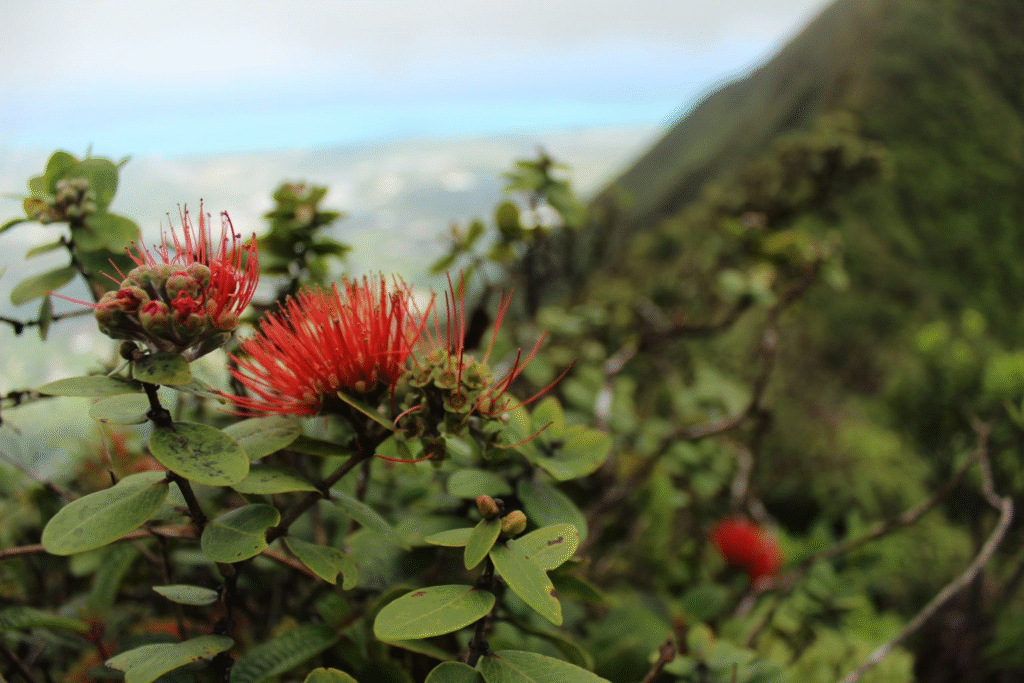
Hawaii, known for its dramatic volcanoes, pristine beaches, and lush rainforests, is home to a unique ecosystem found nowhere else on Earth. Among the island’s most iconic and ecologically important native species stands the Ōhiʻa Lehua tree (Metrosideros polymorpha). Found throughout the Hawaiian Islands, this hardy and versatile tree plays a crucial role in maintaining the health of native forests, supporting biodiversity, and connecting the islands’ natural and cultural heritage. As threats to this tree continue to grow, understanding its importance is more essential than ever.
The Ōhiʻa Lehua tree is not only the most widespread native tree in Hawaii but also one of the first to colonize lava flows after volcanic eruptions. Its ability to thrive in harsh conditions—whether in dry shrublands or misty rainforests—makes it foundational to the islands’ forest systems. In fact, the presence of the Ōhiʻa Lehua tree in the second paragraph of any discussion about Hawaii’s environment reflects just how deeply rooted it is in the landscape and the ecological narrative of the state. It creates the primary canopy in many native forests and provides the structural backbone for a wide variety of life that depends on it for survival.
A Cornerstone of Biodiversity
Ecologically, the Ōhiʻa Lehua tree supports a web of life that is uniquely Hawaiian. Its bright red (sometimes yellow or orange) lehua blossoms are a primary nectar source for native honeycreeper birds like the ʻapapane, ʻamakihi, and ʻiʻiwi. These birds, in turn, help pollinate the tree, creating a cycle of mutual support. The tree’s leaves, bark, and roots harbor numerous native invertebrates, including rare and endangered species. Without the Ōhiʻa, many of these creatures would struggle to survive.
In addition to providing food and habitat, the tree plays a significant role in regulating the hydrological cycle. Its roots stabilize the soil on mountain slopes, reducing erosion and sediment runoff into streams and coastal waters. The canopy captures mist and rain, channeling it gently to the forest floor, where it replenishes groundwater. This process supports freshwater systems that are vital for both native flora and human use.
Cultural Significance Beyond Ecology
To Native Hawaiians, the Ōhiʻa Lehua tree holds deep cultural and spiritual significance. In Hawaiian mythology, the tree is linked to the story of lovers Ōhiʻa and Lehua. According to legend, the volcano goddess Pele turned the warrior Ōhiʻa into a tree after he rejected her for Lehua. In grief, Lehua was transformed into a blossom so she could be united with him. Picking a lehua flower is said to cause rain—symbolizing Lehua’s tears of separation.
Beyond folklore, the tree has traditional uses in Hawaiian life. Its wood was used to construct weapons, tools, and house posts due to its strength and durability. The flowers were used in leis, and its presence in hula chants and ceremonies reflects its revered status. The Ōhiʻa Lehua tree, therefore, is more than just a part of the landscape—it is a living link to Hawaii’s ancestral knowledge and cultural identity.
Threats to the Ōhiʻa Lehua Tree
Despite its resilience, the Ōhiʻa Lehua tree is currently facing unprecedented threats. The most alarming is Rapid ʻŌhiʻa Death (ROD), a fungal disease caused by Ceratocystis species. This aggressive infection can kill mature trees in weeks and has already decimated thousands of acres of native forest. As ROD spreads across the Big Island and threatens other islands, the loss of Ōhiʻa poses a cascading danger to the entire ecosystem.
Invasive species also endanger the tree. Non-native plants can crowd out seedlings, while introduced animals such as pigs uproot saplings and damage forest floors. Climate change compounds these threats by altering rainfall patterns, increasing temperatures, and creating conditions favorable for disease and invasive species.
Conservation Efforts and Community Involvement
Fortunately, efforts are underway to save the Ōhiʻa Lehua tree and the ecosystems it supports. Scientists are researching disease-resistant strains, studying forest recovery methods, and monitoring the spread of ROD. The Hawaii Department of Land and Natural Resources, along with federal partners and local nonprofits, has initiated quarantine rules, outreach programs, and reforestation projects.
Community engagement is also a vital part of the solution. Residents and visitors alike are encouraged to follow guidelines that help prevent the spread of disease, such as cleaning hiking boots and not transporting potentially infected plant material. Schools and cultural organizations are helping to educate the next generation about the importance of the Ōhiʻa Lehua tree through storytelling, science, and traditional practices.
A Symbol of Hope and Resilience
The Ōhiʻa Lehua tree symbolizes resilience, not just for its ecological role in regenerating forests after lava flows, but for the spirit of the Hawaiian people and the land itself. Its ability to thrive in difficult conditions mirrors the perseverance of native species and communities facing modern environmental challenges. By protecting the Ōhiʻa, we are preserving a key pillar of Hawaii’s ecosystem, culture, and future.
In conclusion, the Ōhiʻa Lehua tree matters deeply to Hawaii—not just as a botanical marvel, but as a keystone species that shapes the very fabric of life on the islands. It teaches us how interconnected ecological health and cultural heritage truly are. To lose the Ōhiʻa would be to lose a part of Hawaii’s soul. Through science, stewardship, and shared responsibility, we can ensure that this iconic tree continues to bloom for generations to come.
